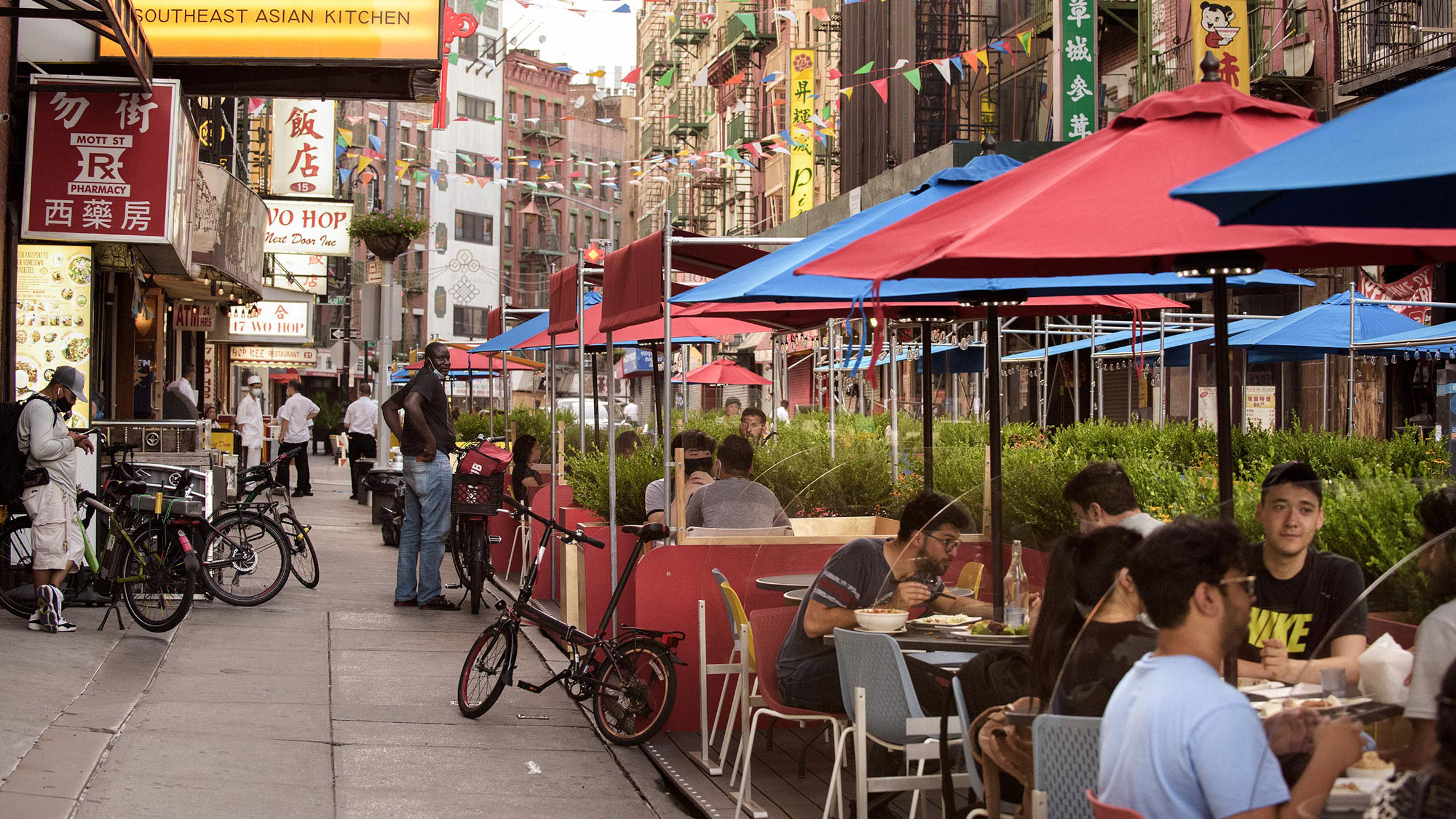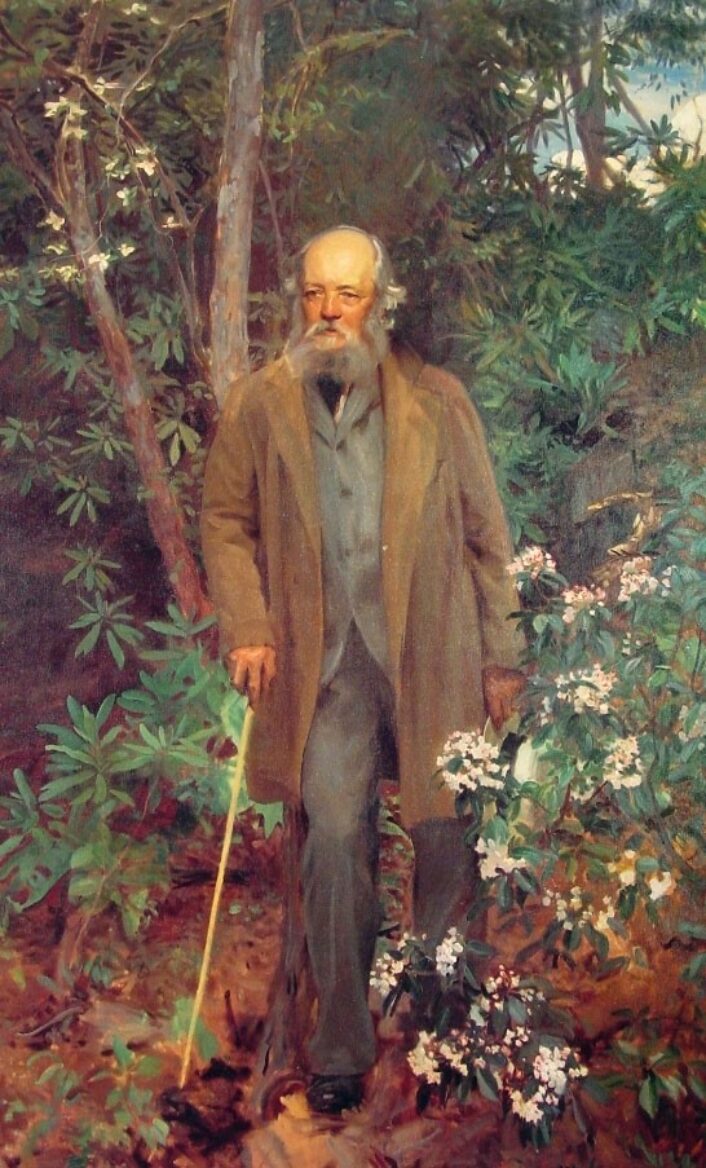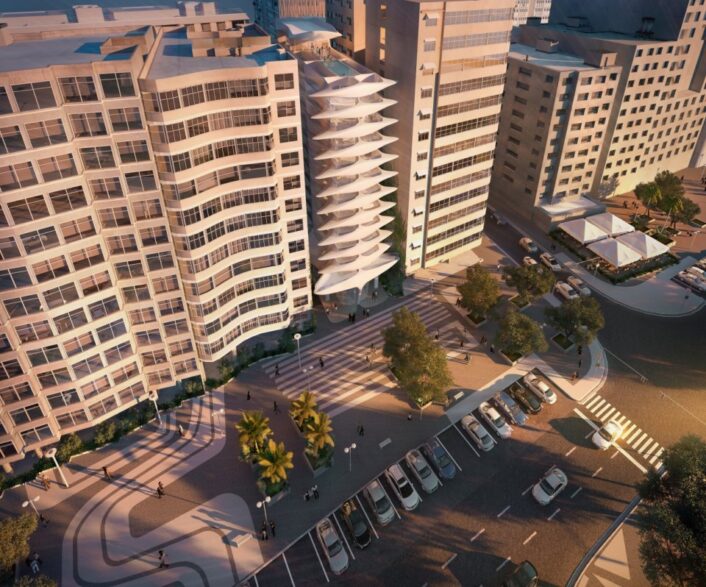Architecture
Will cars rule the roads post-pandemic in NYC?
New York City has 6,000 miles of city streets. That might seem like a big number; however in a city that is constantly one big traffic jam, it never seems like enough.
One benefit of this spring’s lockdown is that traffic virtually ceased in the over-crowded city. This was a welcome change to all those pedestrians who took to the streets as a way to escape their apartments. Evidence has shown that people throughout the country took on walking as a way to get fresh air, get exercise, and save their sanity. Thus, it was wonderful that the empty streets were able to serve as extra “sidewalks” so that people could socially distance on their urban treks.

Summertime outdoor dining in New York City’s Chinatown.
Image courtesy of: Dezeen, photographed by: Emily Andews
The vacant streets have been a lifeline for restaurant owners who are able to place tables on sidewalks and city streets. Allowing for more diners while maintaining a safe distance for the customers has been essential for these businesses, small and large, to stay afloat.
In addition, the empty streets provided cyclists and pedestrians with more space to “move.” Allowing people to use the streets vs. crowding in the narrow city corridors has given locals a sense of added security; especially since so many more city dwellers have steered clear of public transportation.
New York City’s mayor Bill de Blasio recently said that the city’s Open Restaurants Program will be expanded to a year-round program. This allows restaurants to extend seating onto streets, sidewalks, and public spaces. Of course, gaining neighbors’ consent is necessary and establishments must follow a list of requirements for an Open Restaurant design, which includes a clear path on the pavement, a maximum distance from the curb, and a required height of enclosing barriers.
Extending the Program into the winter will force restaurants to install electrical heaters on both the sidewalks and the roadways. Propane and natural gas heaters will be allowed only on pavement and they require a permit from the New York City Fire Department.
Jerold S. Kayden, a Harvard University professor of Urban Planning and Design said (courtesy of The New York Times), “The longstanding tension between those who see cars as evil and those who see cars as essential has been heightened by the pandemic because usable outdoor space is more crucial than ever.”
Initially, the mayor allowed for the closure of 22 streets, in September that number reached 87. Among those streets, 40 are closed on both weekdays and weekends. Considering that 10,200 establishments were certified to provide outdoor dining, it’s hard to imagine all the work that went into ensuring that this program does not completely change the city’s urban landscape.
There’s evidence pointing to the fact that there is growing conflict over the use of city streets. For many years, community activists, transportation experts, and elected leaders sought to repurpose roads for uses other than cars. Now that streets are closed, who’s to say whether or not drivers will “get them back.”
Other big metropolitan cities in the United States and throughout the world are also taking part in closing streets to cars. In London, for example, there is a set plan to create new walking and biking routes, widening sidewalks, and limiting traffic on residential streets. In Paris, officials are moving to add more than 400 miles of new bike lanes across the metro region. Finally in Berlin, 14 miles of new bike lanes appeared almost overnight during the early summer months.
Athen’s new, young mayor, Kostas Bakoyannis, is forging ahead with new plans as the capital embarks on one of the most ambition rejuvenation plans in years, including an allocation of 50,000 square meters of public space for cyclists and pedestrians. Most importantly will be a four-mile “grand walkway” that will connect the archeological sites in the city’s historic center. Pavements will widen, boulevards will become pedestrian only, and traffic will be banned from areas beneath the Acropolis.
Admitting that the global pandemic played an enormous role in speeding along infrastructure works that probably would have taken a decade to complete, the mayor says (courtesy of The Guardian), “We have this once-in-a-lifetime opportunity and are fast-forwarding all our public works. The goal is to liberate public space from cars and give it to people who want to walk and enjoy the city … Athens will be cleaner, greener and better lit.”


